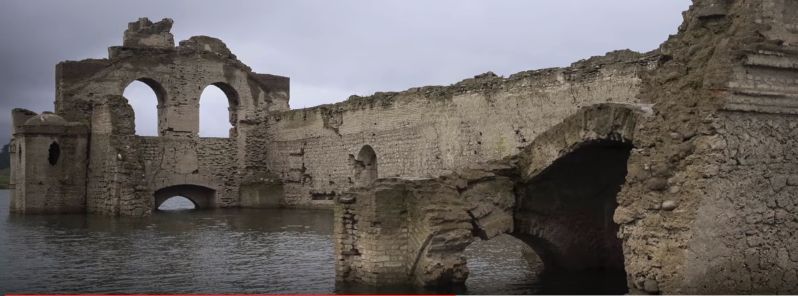Extreme drought reveals 400 years old temple remnants submerged in the Nezahualcoyotl reservoir, southern Mexico

The drought in southern Mexico state of Chiapas has been so persistent this year, that the water level in the Nezahualcoyotl reservoir dropped extremely low. This has led to a thrilling discovery of the remnants of a colonial era church, previously submerged deep into reservoir waters, the Associated Press reported on October 17, 2015.
Extremely dry conditions prevailing across southern Mexico, caused the water level to drop by 25 meters (82 feet), which was enough to reveal a church, hiding in the middle of the reservoir.
Video credit: New York Daily Times
The Temple of Santiago was flooded in 1966 when the dam on the reservoir was built, and didn't emerge since 2002, when the water was so low that visitors had no problems visiting and walking around the remnants of the church.
"The people celebrated. They came to eat, to hang out, to do business. I sold them fried fish. They did processions around the church," a local fisherman Leonel Mendoza said.
Receding waters revealed something spectacular – the remains of a mid-16th century church. http://t.co/jiZ1cdtSDZ pic.twitter.com/QjW0LyNaFo
— Fox News (@FoxNews) October 19, 2015
The temple is 61 meters (183 feet) in length, 14 meters (42 feet) wide, and 10 meters (30 feet) high with its bell tower rising 16 meters (48 feet) above the ground.
According to architect Carlos Navarete, the church was built around 1564, and was abandoned when the big plagues devastated the area between 1773 and 1776.
Featured image: The Temple of Santiago emerging out of Nezahualcoyotl reservoir, southern Mexico. Image credit: New York Daily Times

Commenting rules and guidelines
We value the thoughts and opinions of our readers and welcome healthy discussions on our website. In order to maintain a respectful and positive community, we ask that all commenters follow these rules.